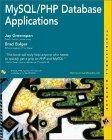Answered step by step
Verified Expert Solution
Question
1 Approved Answer
Project 1 : Picking an Insurance Plan Learning Outcomes Recognize and apply the software development phases Utilize Java syntax in fundamental programming algorithms Recognize and
Project : Picking an Insurance Plan
Learning Outcomes
Recognize and apply the software development phases
Utilize Java syntax in fundamental programming algorithms
Recognize and apply the various input and output devices in programming
Objectives
By completing this assignment, you will gain experience with the following Java features:
Definition of a Java class
Variable declaration and assignment
Using Scanner for console input
Using JOptionPane for GUI input
The String class
ifelse statements
Arithmetic expressions and data manipulations
Background
Employees often have to pick among several health insurance plans offered by their employer. Different plans are better
for different circumstances, like whether or not you are covering a family and the amount of doctor visits you expect to
make. For our purposes, there are three attributes of an insurance plan that are important:
The premium: this is how much you have to pay for a year of insurance.
The deductible: this is how much you have to pay for your doctor's bills before insurance will start paying anything.
For example, if you have a $ deductible, then your first $ worth of doctor's bills during the year will be
your responsibility to pay. If you have less than $ in expenses during the year, then your insurance will not pay
anything toward your bills. Otherwise, you pay the first $ and you and your insurance company split the cost
for the rest of the bills. How those bills are split is determined by the...
The coinsurance: this is a percentage, like After you have "met your deductible"that is paid doctor's bills
totaling your deductible amountthen the remaining bills for that year are split. You pay the coinsurance, and your
insurance company covers the rest.
Here are a few examples:
My plan has $ premium, $ deductible, and coinsurance.
a If I have no medical bills, then my health care costs are $ie just the premium
b If I have $ in medical bills, then I pay all of those because they are less than the deductible plus the premium.
My health care costs are $
c If I have $ in medical bills, then I pay the premium, plus my $ deductible, plus of the bills over the
deductible of $ is $ Thus, my health care costs are $
d If I have $ in medical bills, then I pay the premium, plus my $ deductible, plus of the bills over the
deductible of $ is $ Thus, my health care costs are $
In scenario suppose my plan has $ premium, $ deductible, and coinsurance.
a If I have no medical bills, then my health care costs are $ie just the premium
b If I have $ in medical bills, then I pay all of those because they are less than the deductible plus the premium.
My health care costs are $
c If I have $ in medical bills, then I pay all of those because they are less than the deductible plus the
premium. My health care costs are $
d If I have $ in medical bills, then I pay the premium, plus my $ deductible, plus of the bills over the
deductible of $ is $ Thus, my health care costs are $
Project Description
For this project, you will build a program that computes the health care costs given the premium, deductible, coinsurance,
and total medical bills. We will be working with two predefined health care plans, as well as letting the user enter their
own parameters. Here are the two plans:
Analysis
As you gain experience with programming, you will be able to analyze the description above and create a program to
compute the health care costs. In this first project, however, we will guide you through the analysis part and help you
design your program.
One of the first steps in analysis is determining the inputs that your program needs and the outputs it will produce. Before
reading the next part of the description, take a minute to write down the inputs and outputs.
You should have written down the following:
Inputs: Premium, deductible, coinsurance, amount of medical bills
Output: health care costs
Design
As with the analysis, as you gain experience with programming you will reach the point where you can complete the design
on your own. This is where you figure out the algorithm ie the steps the computer needs to take for computing the
health care costs for a given premium, deductible, coinsurance, and amount of medical bills. You can use the definitions
and examples above to figure this out, along with the requirements that follow.
Your program should meet the following specifications. The amount of points for each part is in square brackets
pts As with all your code, correct compilation is critical.
Commenting and style
o pts Comments should be clearly written with correct grammar and spelling.
o pts Indentation and general appearance should
Step by Step Solution
There are 3 Steps involved in it
Step: 1

Get Instant Access to Expert-Tailored Solutions
See step-by-step solutions with expert insights and AI powered tools for academic success
Step: 2

Step: 3

Ace Your Homework with AI
Get the answers you need in no time with our AI-driven, step-by-step assistance
Get Started


